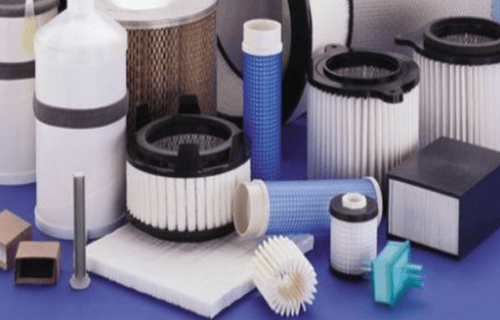Air Filters and Asbestos Prevention

In many homes, spring cleaning is part of general home maintenance and the perfect time for tasks like cleaning out even the not-so-frequented parts of the house. It's not uncommon that sometimes cleaning can turn into more significant projects like home renovations or repairs.
Given that, throughout the 20th century, there was a strong push for the commercial use of asbestos, and the construction industry took full advantage of it, homeowners who undertake remodeling or repair should consider the presence of asbestos in the house. Generally, homes built before the 1980s most likely contain products made with asbestos:
- insulation
- adhesives
- ceiling products
- cement board
- flooring
- paints
- roofing
- wallboard
- taping compounds
- plasters
Asbestos-containing products are safe as long as they are in good condition. If they are damaged and disturbed, they can release toxic asbestos fibers into the air. It's advisable to observe every part of the house where you might come into contact with asbestos and watch for signs of wear and tear while working on the projects.
Air Filters Can Make Homes Safer
Asbestos is harmless until the fibers become airborne. The microscopic asbestos parts can float around, invisible to the naked eye. If this happens, the air should be filtered and purified immediately. After the source of asbestos has been appropriately taken care of, an air filter is helpful to remove the tiny asbestos particles. Some of the most common types with proven efficiency are:
- ultraviolet purifiers
- purifiers with activated carbon
- ionic purifiers
- HEPA filters
HEPA systems are known for their filters effectively filtering out asbestos fibers. These types of filters are capable of trapping 99.97% of all particles 0.3-microns or larger, removing from the air ultra-fine particles like:
- dust
- dander
- pollen
- mold
- smoke
- asbestos fibers
Asbestos particles can be between 0.7-90 microns, so the HEPA filter has no problem removing them. However, air filters capable of trapping asbestos dust will help protect against more than just the dangerous fibers, so their benefit is multifaceted.
Air Filter Replacement for Continuous Effectiveness
Over time, a filter is more and more covered in particles, and the mesh weaving becomes clogged and filled, unable to prevent or remedy air contamination. Spring cleaning is the perfect time to replace clogged filters and ensure fresh air in your home. Tending periodically to air filters is essential in making the air you breathe safe. Besides being an obstacle for airflow, dirty air filters increase the danger of asbestos fibers, germs, and pathogens contaminating indoor air.
Depending on the environment, air filters can last long periods. But those capable of trapping microscopic asbestos particles tend to become dirty quickly due to their tightly woven mesh weaving. Air filter mesh weaving ranks on the Minimum Efficiency Reporting Value (MERV) system. A tighter mesh filters better but ranks higher. Air filters ranking too highly on the MERV scale generate additional costs, as their mesh affects airflow. When looking for an adequate filter, keep in mind that it should be able to protect while remaining affordable.
However, if the source of asbestos contamination is still in the home, there is only so much a filter can do. The best action is to hire a professional asbestos abatement contractor to remove the source safely, then use a HEPA filter to remove any remaining particles. Should you try to discard asbestos-contaminated material alone, please consider that moving or jostling could release tiny particles into the air. Follow our DIY asbestos removal guide to handle asbestos safely.
